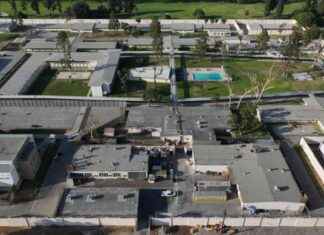Iran’s Imam Khomeini Spaceport is likely to be launched. Iranian state media have provided a list of planned satellite launches for the Islamic Republic’s civilian program in space. This program has been plagued by failed launches. The parallel program run by Iran’s paramilitary Revolutionary Guard was successful in putting a satellite into orbit last January.
The launch of the vehicle amid the Vienna talks is in keeping with the tough-line position taken by Tehran’s negotiators. They already described six rounds of diplomacy previously as a “draft,” which has been frustrating Western countries. Germany’s foreign minister warned that “time is running out” at this point.
RELATED COVERAGE
All this is a fitting fit for a renewed focus of space by Iran’s hard-line President Ebrahim Raisi, according to Jeffrey Lewis, an expert at James Martin Center for Nonproliferation Studies, Middlebury Institute of International Studies, who studies Tehran’s program. Concerns about Iran’s former President Hassan Rouhani, who facilitated the dissolution of the nuclear agreement, likely have diminished with the U.S. claiming that it aids Tehran’s missile program.
Lewis stated, “They’re walking on eggshells.” “I believe Raisi’s people have a different balance in their minds.”
The Iranian state media didn’t acknowledge the activity at the satellite port and Iran’s mission in the United Nations didn’t respond to a request to comment. Requests for comment were not received by the U.S. military which monitors space launches.
Satellite images taken by Planet Labs Inc. on Saturday and obtained by The Associated Press, show activity at the spaceport in Iran’s desert plains in rural Semnan Province, about 240 km (150 miles) southeast Tehran
A support vehicle was parked next to a large white gantry, which normally houses a rocket at the launch pad. This support vehicle can be seen in satellite photos of the site, just before a launch. A hydraulic crane with a platform on the top is also visible. This support vehicle was likely used to service rockets and has been seen in previous satellite photos.
Satellite images taken at the spaceport in recent days have also shown an increase of cars, which is another indicator of the increased activity that usually precedes a launch. Lewis also said that activity has increased at a building thought to be the “checkout facility” for rockets.
He told the AP that this was a traditional pre-launch activity.
This activity follows a Dec. 5 article by Iran’s state-run IRNA News Agency claiming that four satellites were in Iran’s space program. One of the satellites, low-orbit imaging satellite Zafar 2, was described as “under the final stage of preparation.” It weighed in at 113 kg (250 pounds).
After a launch at the spaceport in February 2020, however, the Zafar 1 failed to reach orbit. According to Iranian officials, the Simorgh (or “Phoenix”) rocket was used for the launch. However, the rocket failed to place the satellite in orbit at the right speed. The satellite was built by Iran for just 2 million euros.
In recent years, Iran’s civil space program has been plagued by a number of setbacks as well as fatal explosions. In 2019, Donald Trump tweeted a mysterious blast that appeared to have been a classified U.S. satellite image of the aftermath of the explosion. The caption was: “The United States of America wasn’t involved in the catastrophic accident.”
In April 2020, the Guard revealed its secret space program when it successfully launched a satellite into orbit. Later, the head of U.S. Space Command dismissed the satellite as “a tumble webcam in space” and that it wouldn’t provide Iran with vital intelligence. However, the satellite demonstrated Tehran’s ability get into orbit.
Iran has launched several satellites into orbit over the past decade. In 2013, Iran also sent a monkey into space. According to a report from state-run television, Iran’s Supreme Council of Space met for the first times in 11 years under Raisi.
Raisi stated at the November meeting that it showed the government’s determination to develop the space sector. He was joined by Foreign Minister Hossein Amirabdollahian.
According to the U.S., such satellite launches are a violation of a U.N Security Council resolution directing Iran not to engage in any activity that could lead to ballistic missiles capable delivering nuclear weapons.
Iran, which has long maintained its commitment to non-proliferation of nuclear weapons, insists that satellite launches and rocket testing do not include a military component. Tehran claims it has not violated the U.N. resolution, as it “asked” Tehran to stop conducting such tests.
However, tensions are rising over Iran’s nuclear program. Trump unilaterally pulled America out of the Iran nuclear agreement with world powers in 2018. Iran has slowly been abandoning all restrictions placed on its program by the deal.
Iran enriches uranium to 60% purity today — a small technical step from 90% weapons-grade. Iran’s stockpiles of enriched uranium continue to grow, and international inspectors have challenges monitoring their progress.
Lewis stated that he expected to see the space program grow given Raisi’s interest.
He stated, “They are not restricted by concerns about Iran deal in the way Rouhani was.”





